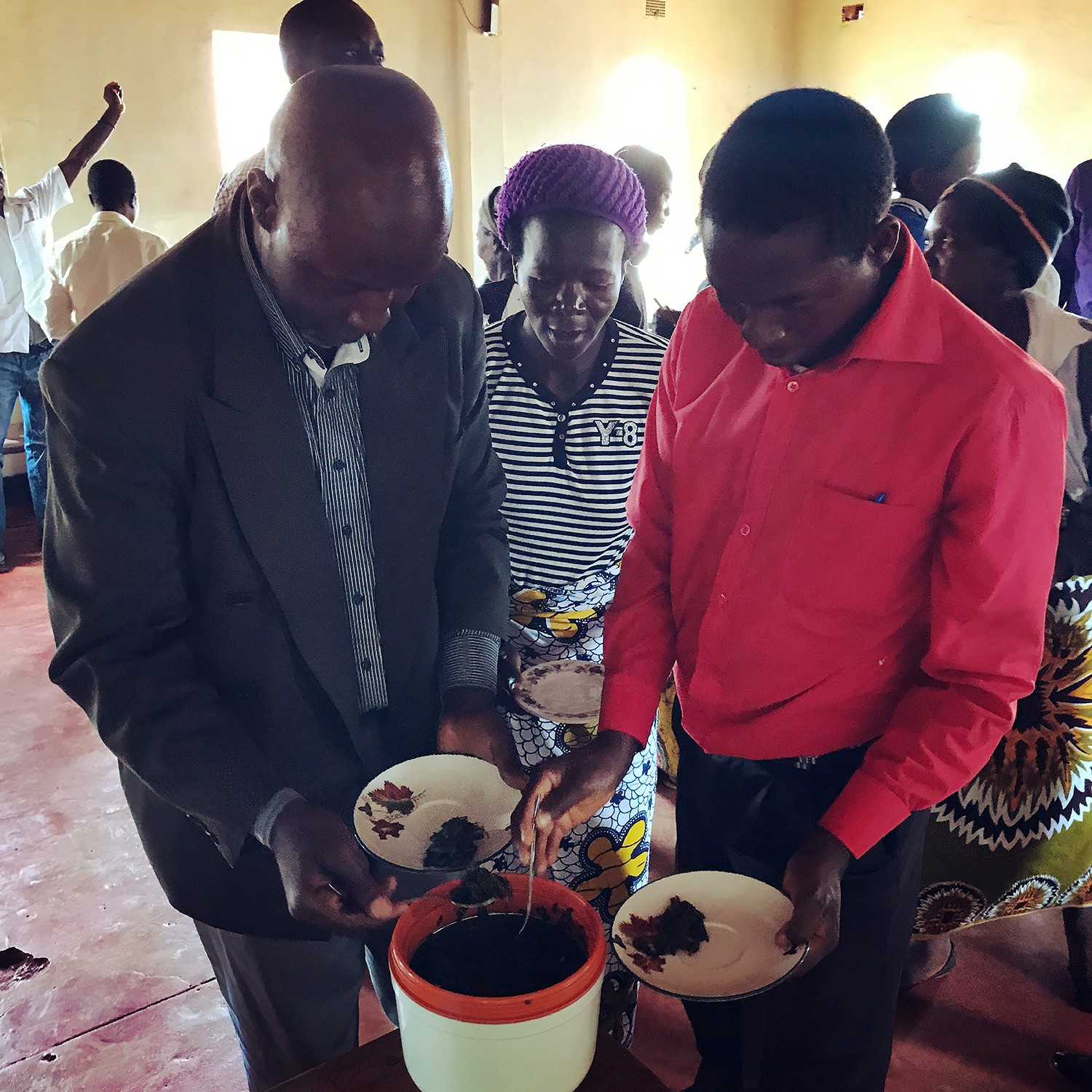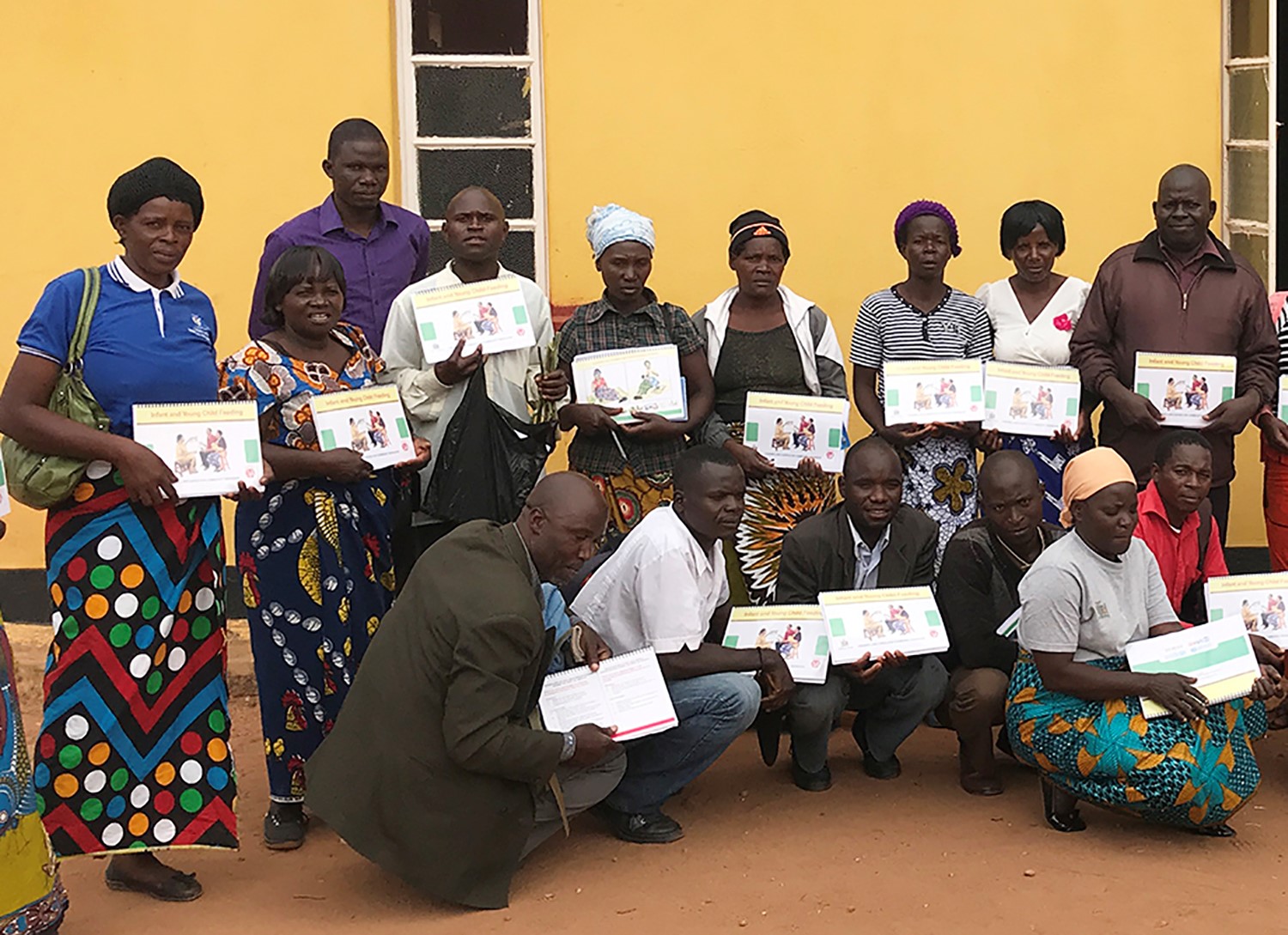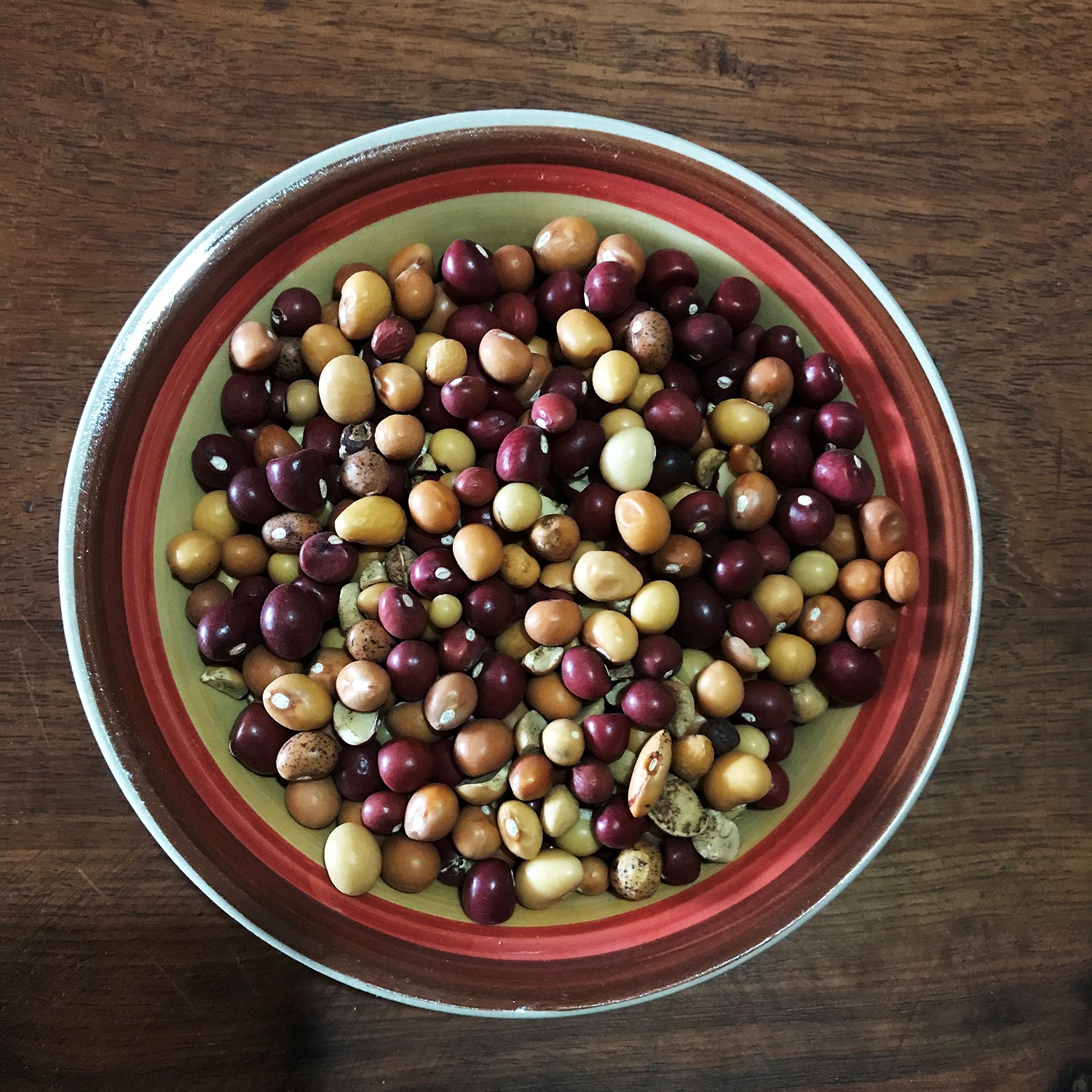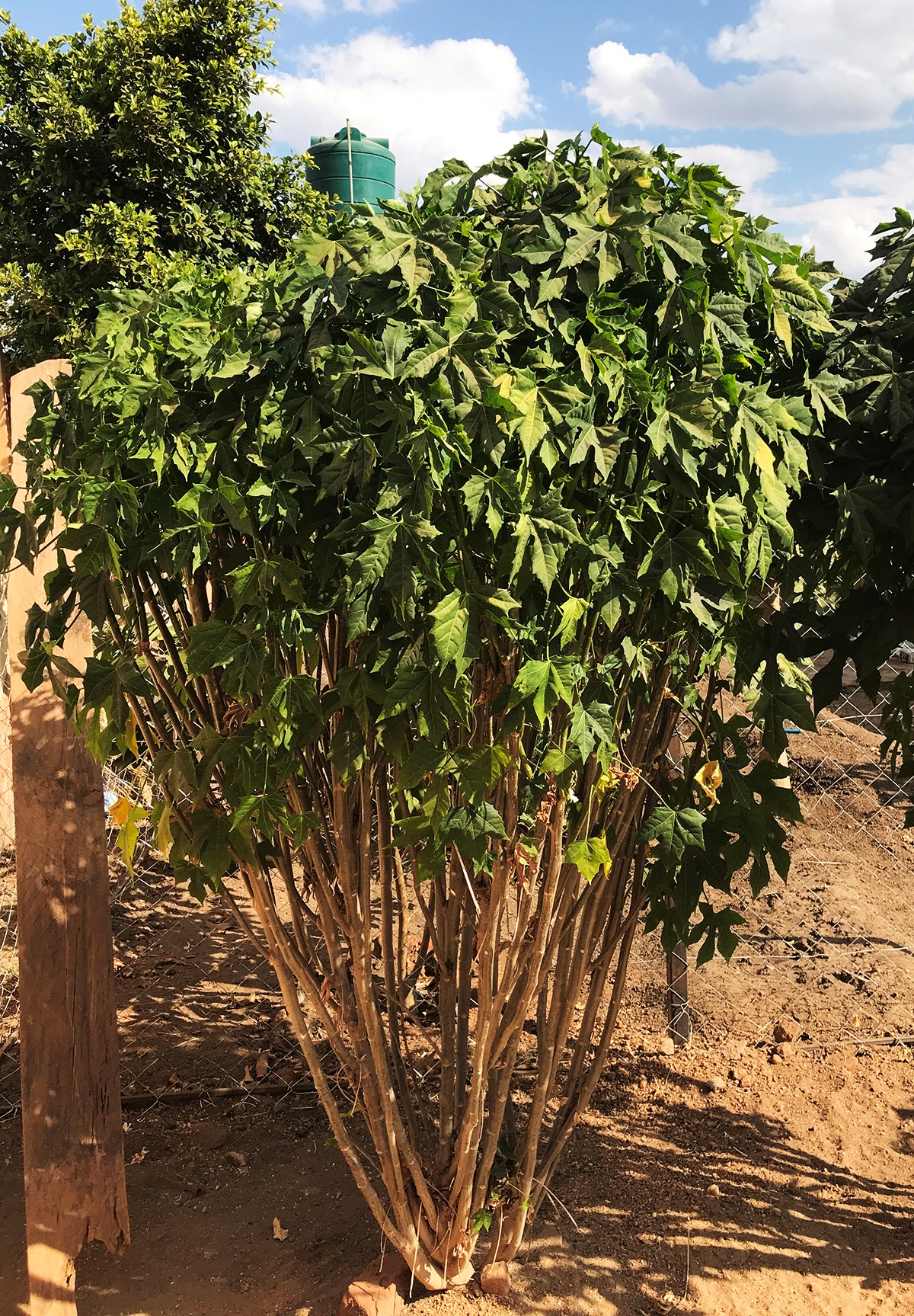A Letter from Charles and Melissa Johnson, serving in Zambia
July 2018
Write to Charles Johnson
Write to Melissa Johnson
Individuals: Give to E200534 for Charles and Melissa Johnson’s sending and support
Congregations: Give to D507589 for Charles and Melissa Johnson’s sending and support
Churches are asked to send donations through your congregation’s normal receiving site (this is usually your presbytery)
One of the joys of travel and living abroad is trying new foods that are important in local cultures. Living in South Texas prior to coming to Zambia, our lives and diets were heavily influenced by Mexican culture, and those influences continue to this day — our Christmas celebration seems incomplete without tamales and other Mexican dishes shared with our family and friends following Christmas Eve worship. Charles has fond memories of time spent with his father, roasting cabrito, or young goat, over an open pit in the ground full of bright red mesquite coals, and grilling machitos, a sausage-like dish made from the heart, liver and other chopped innards stuffed into a section of tripe. Machitos chopped and placed in a flour tortilla — yum!
Our travels have introduced us to cuy (guinea pig), capybara (the world’s largest rodent) and piranha in Peru. In Congo, we learned to like bidia, a thick porridge-like dish made with manioc flour, plaintain and pili pili, a popular condiment made from hot, crushed peppers. There are many more local foods we’ve tried, and we probably ate some not knowing what we were eating. I think it’s safe to say we’re pretty adventurous when it comes to dishes that are so important in local cultures.
The importance of culture in the foods eaten in Zambia came as no surprise to us when we arrived. It goes without saying that in the Zambian context, no meal is complete without nshima, a thick porridge-like dish made from maize flour, but there are many other foods eaten here that are ingrained in the local culture. Westerners might not be inclined to try the local delicacy, mbeŵa, or field mice, but it’s an important part of the culture of those living in Eastern Province. We haven’t quite worked our way up to mbeŵa yet, but can it really be that different from cuy?
Before coming to Zambia, Charles and his family farmed in South Texas, where careless weed, or calite as it’s called in Spanish, was a huge nuisance in their fields. Charles remembers his dad stopping, getting out of his pickup, and walking into the field to extricate a single plant, more than once. However, this plant, a type of amaranth (Amaranthus palmeri), is very nutritious and cooked like spinach in Mexico. Here it is known as bondwe, and the leaves are an important part of the local diet. We’ve also learned the value of other types of mphangwe, or greens, eaten here. Mphangwe ya nyungu, or pumpkin leaves, is one of our favorites, especially when groundnut (peanut) flour is added, giving it a wonderful flavor, and improved nutritional value.
Despite the availability of many traditional foods here, people struggle with nutrition and food security, especially during dry season. According to the UN’s World Food Programme, “people are considered food secure when they have availability and adequate access at all times to sufficient, safe, nutritious food to maintain a healthy and active life.” Food security for people in our community, most of whom are involved in the physically strenuous work of smallholder agriculture, can be a challenge.
As a PC(USA) mission co-worker involved in agricultural development, Charles must work to find a balance between food security and food sovereignty. Food sovereignty is a term first used by the organization Via Campesina in 1996, and asserts that the people who produce, distribute, and consume food should control the mechanisms and policies of food production and distribution, rather than the corporations and market institutions that have come to dominate the global food system. It also encompasses the right of peoples to healthy and culturally appropriate food and their right to define their own food and agriculture systems.
As Charles recently prepared to make a presentation at a training program hosted by CCAP Zambia’s Relief and Development Department on June 28, that last sentence was on his mind — “It also encompasses the right of peoples to healthy and culturally appropriate food and their right to define their own food and agriculture systems.” The gathering was attended by Zambians from area villages, mostly Tumbuka, with a focus on improved nutrition. Charles’ presentation discussed underutilized and neglected crops, and then focused on two specific edible crops, one familiar and the other unfamiliar to most Zambians.
Several months ago, we were shopping in the Lundazi market and found a type of legume that we hadn’t seen before. We learned that it’s similar to groundnut, and is known locally as zyama. In other parts of Africa, Vigna subterranea is known as Bambara groundnut. Because of its high nutritional value, it is considered to be a complete food. But when we returned home from the market with our purchase, Charity, who works at our house, told us zyama is considered to be “poor people food,” and in the local culture, only women who have lost a child can plant it. Tikakumanya yayi! (We didn’t understand!)
During his presentation that day, Charles spoke of the nutritional benefits of zyama, acknowledging the cultural aspects of the plant, but also reminding them there was a time when the cultural practice was for the wives of an Ngoni chief to be buried alive with him when he died. Like our own early history, which includes the Salem Witch Trials, over time it was understood that in some cases, it is good for cultural practices to change. Perhaps the cultural view of zyama will change too, as people become more aware of its nutritional benefits.
The other plant he discussed was chaya, also known as Mexican tree spinach. Although it is not native, Charles anticipated that Chaya might be accepted by the local culture for several reasons. First, it is a perennial that is easy to propagate from cuttings, grows quickly, has few insect pests, does well in dry climates, and is very nutritious. Melissa cooked some chaya, which the attendees were able to sample following the presentations, and all gave it two thumbs up. The participants were sent home with some information and four chaya cuttings to propagate, with one condition — once their chaya is growing, they have to tell their neighbors about it and share cuttings with them. Charles has also shared chaya cuttings with a number of area Peace Corps Volunteers, and he hopes to one day be known as Johnny Chaya Cutting in Eastern Province.
Some cultural practices can change over time — Presbyterianism is strong here, and there’s no doubt some will repeat that famous Presbyterian phrase, “But we’ve always done it that way!” But through education and looking for ways to make contributions in areas of perceived need while being mindful of food sovereignty, change and improvement in food security can take place.
Soon we will celebrate our third anniversary as (PC)USA mission co-workers and enter the final year of our current term. We will be making a brief trip to the U.S. in December to attend our son Brien’s graduation from the University of Alabama — Roll Tide! — and spend Christmas with him and our daughter Meagan’s family in Atlanta. Believe it or not, we are already contemplating and beginning to plan for our interpretation assignment next summer. We’ll be sharing more about our travel plans in our next newsletter, but if you and your church are interested in hosting us to learn more about our work in Zambia, feel free to contact us now.
We want to extend our sincere thanks to all of you who support our work both in prayer and with financial contributions. Both are critical to the success of our work in Zambia. Blessings to all of you.
Charles and Melissa
![]() You may freely reuse and distribute this article in its entirety for non-commercial purposes in any medium. Please include author attribution, photography credits, and a link to the original article. This work is licensed under a Creative Commons Attribution-NonCommercial-NoDeratives 4.0 International License.
You may freely reuse and distribute this article in its entirety for non-commercial purposes in any medium. Please include author attribution, photography credits, and a link to the original article. This work is licensed under a Creative Commons Attribution-NonCommercial-NoDeratives 4.0 International License.



